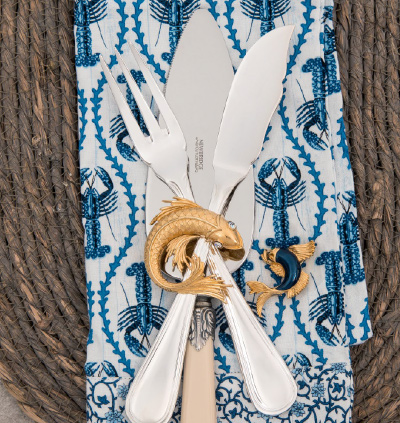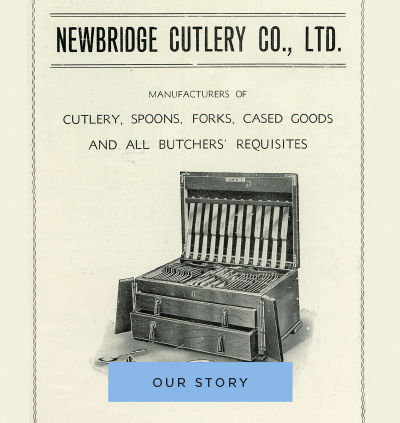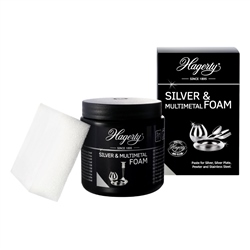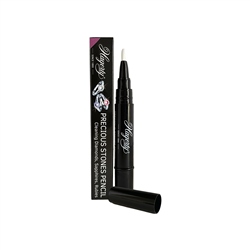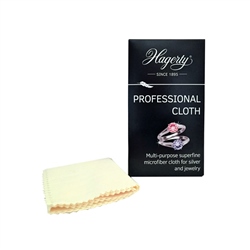Caring for your Newbridge Silverware Silver Plated Cutlery
Silver is a relatively soft metal that requires sympathetic handling and cleaning, by adhering to the following rules, cutlery of this quality will last for decades.
Tarnish
Your silverware may be tarnished by sulphides that are always present to some extent in the atmosphere and in many foods, green vegetables and eggs being the most potent.
Sulphides in the atmosphere originate mainly from combustion of gas, oil, coke, wood, etc. and from living creatures. The tips of the silver plated forks are most prone to tarnish as they are in regular contact with eggs, salt, condiments and very hot foodstuffs.
Dark spots may arise when silverware comes into contact with undissolved salt in hot solutions of certain powder detergents. Liquid bleaches should never be used and powder detergents should always be dissolved before use.
Your cutlery should be rinsed off as soon as possible after use. Allowing food to dry on the surface of the cutlery gives the salts and acids in the food more time to act and cause tarnishing.
Dishwashing Guidelines
Newbridge Silverware silver plated cutlery may be cleaned in the dishwasher however it is vital that you adhere to a few simple rules.
Adhere to the dishwasher manufacturers / detergent makers instructions concerning the type and quality of detergent used and the method of loading cutlery in the compartments provided.
- The water temperature should not exceed 50C.
- Do not mix stainless steel and silver-plated cutlery in same dishwasher load.
- Never use rubber bands when storing silver plated cutlery, they cause severe discoloration.
- Do not leave the cutlery sitting in the Dishwasher for long periods of time or use a “Rinse and Hold” Cycle.
- Remove the cutlery before the drying cycle begins and hand dry the cutlery as soon as the cycle has finished.
- Do not over stack the cutlery or stack it too close together – the vibration will cause scratching to the surface.
- Do not allow concentrated dishwashing liquid to come in contact with the cutlery as this may cause permanent staining of the surface.
Hand-washing Guidelines
To keep your silverware in good condition hand-washing is the safest option:
- Wash gently in warm water and a solution of washing up liquid being careful not to have the water too hot as silver is a delicate metal.
- Wash a few pieces of cutlery at a time. Avoid loading all cutlery in the sink at once.
- Never use a scouring pad or any other abrasive agent.
- Wash silver-plated cutlery separately from stainless steel as a chemical reaction may occur.
- Rinse cutlery after washing and dry immediately. Never leave cutlery to soak and never leave cutlery damp.
- Use a soft cotton dish towel to dry.
- Store cutlery in an air tight container, anti tarnish roles or in the canteen box itself.
Polishing your silver-plated cutlery
- It is recommended to polish your silver-plated cutlery twice per year to maintain its brilliant finish. Too much polishing can wear down the silver-plated finish.
- Between polishes, buffing with a soft dry cotton cloth will preserve its beautiful glow.
- If tarnish occurs it can be removed by silver polish or silver dip.
- Silver is a soft metal and it is important to use the recommended polishes / dips to keep your silverware in pristine condition.
Silver Polish
If you are using a silver polish, ensure it is a reputable brand, for example Hagerty. With all polishes it is vital to follow the manufacturer’s instructions.
- Only those polishes sold specifically for silver should be used; cleaners intended for chromium plate, stainless steel, etc. will scratch your silver-plated cutlery.
- Always apply the cleaner with a soft cloth or sponge – either of which should be thoroughly and freshly washed to eliminate any abrasive dust particles which could cause scratching.
- When applying polish, use even straight strokes to avoid scratching.
- Do not apply polish to the blade of the knife as it may cause corrosion.
- After using polish, wash and dry cutlery thoroughly.
- Use a clean, soft cloth to buff your silver-plated cutlery.
Silver Dip
Silver dip provides a rapid, less arduous method of de-tarnishing, especially on heavily embossed designs. The following precautions must be taken:
- Never leave silver-plated cutlery in the dip solution for more than 10 seconds.
- Do not use dip solutions to remove very heavy tarnish. They will convert the silver Sulphide to silver, but because heavy tarnish is thicker the surface of the restored silverware may have a matt finish.
- Dip solutions can stain even etch stainless steel knife blades. Any drops that fall onto blades should be rinsed off immediately.
Patina
The characteristic white “patina” of silver which is responsible for much of its aesthetic appeal becomes more pronounced with age due to the optical effect of the multitude of very fine scratches that develop in use. On new highly polished silverware, however, the few fine isolated scratches that first appear tend to be somewhat conspicuous until the white patina has fully developed.



